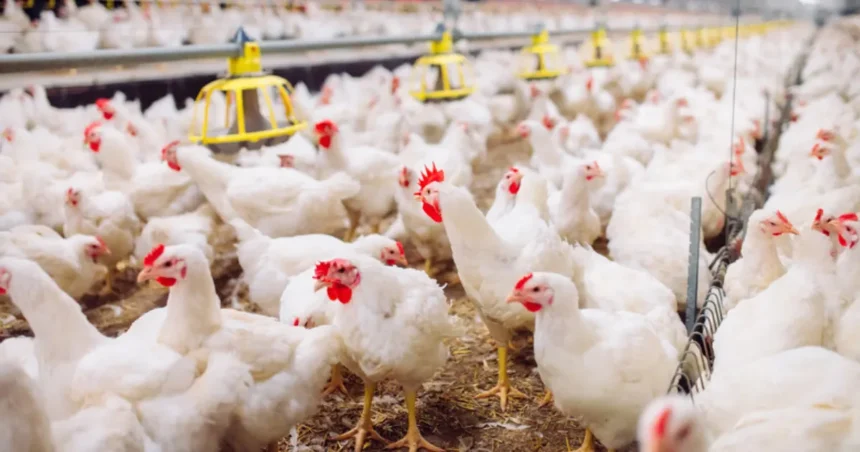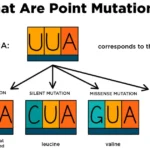Hey there, friend. Imagine biting into your favorite crispy KFC drumstick, but then hearing that the little bird behind it might have had a pretty tough life. That’s the heart of the story we’re diving into today. In late 2024, kfc drops its commitment to using higher-welfare slower-growing chickens in the uk—not for a new sandwich, but for quietly stepping back from a big promise it made back in 2019. The promise? To switch to “higher-welfare” chickens that grow slower and live better lives by 2026. These are the birds that aren’t rushed to grow super fast, which can cause all sorts of health problems.
If you’re scratching your head wondering what this means for your next meal or why it even matters, stick with me. I’ll break it down like we’re chatting over coffee—no fancy jargon, just straight talk. We’ll cover what happened, why chickens are caught in this mess, who’s yelling about it (and why), and what it could mean for the future. Oh, and I’ll throw in a handy table to compare the chicken types, because visuals make everything easier to swallow. By the end, you’ll feel like an expert on this clucky controversy, whether you’re 12 or 82.
Let’s start at the beginning, shall we?
The Promise That Started It All: KFC Joins the Chicken Welfare Club
Picture this: It’s 2019, and the world is buzzing about being kinder to animals. Groups like The Humane League UK and World Animal Protection are pushing big companies to treat farm animals better. They come up with something called the Better Chicken Commitment (BCC). It’s like a pledge for fast-food folks and supermarkets: “Hey, let’s make life less miserable for the billions of chickens we raise for nuggets and buckets.”
The BCC isn’t just feel-good fluff. It lays out six clear rules to follow by 2026:
- Switch to slower-growing chicken breeds (no more “super-speed” growth).
- Give birds more space—no cramming like sardines (max 30kg per square meter).
- Add fun stuff like perches, lights, and things to peck at for enrichment.
- Better air and living conditions.
- Tough audits to make sure everyone’s playing fair.
- No cages or other yucky setups.
Sounds doable, right? Well, KFC UK and Ireland thought so too. They were the first major fast-food chain in the UK to sign on. Back then, KFC’s bosses said it loud and proud: “We’re all in for better chicken lives!” They even roped in their spots in Germany, the Netherlands, Belgium, and Sweden. It was a win for animal lovers—KFC, the king of fried chicken, was leading the charge.
Why did they do it? Simple. Customers were starting to care more about where their food comes from. Plus, KFC already had some good habits, like using Red Tractor assured farms (that’s a UK stamp for decent standards) and doing welfare checks. They figured, as one of the biggest chicken buyers (about 3-4% of the UK’s total), they could nudge the whole industry along. In a press release, they cheered: “No company can lift the welfare of a nation’s chicken on their own. We hope others will join the growing movement.”
Fast forward to today, and over 380 companies across the UK and Europe have jumped on board. Big names like Burger King, Nando’s, Greggs, Marks & Spencer, Subway, and even Nestlé. It’s turned into a real movement, with folks cheering for every step forward.
But here’s the plot twist: KFC’s not crossing the finish line on time. In fact, they’re hitting the brakes hard.
The Backtrack Bombshell: “Sorry, 2026’s Off the Table”
Fast-forward to November 2024. KFC drops a quiet update in their annual chicken welfare report. Drumroll… only 1% of their UK chickens are from those slower-growing breeds. That’s right—one percent. Not 10%, not even 5%. One. Oof.
Then comes the big announcement: KFC won’t meet the full BCC by 2026. No full switch to slower growers. Their reason? “The UK’s poultry industry just isn’t ready.” Rudi Van Schoor, KFC Europe’s chief supply chain officer, put it bluntly: “We signed up in good faith, but the wider sector hasn’t moved fast enough. We’re less than 3% of the market—we can’t do it alone.”
Ruth Edge, KFC’s head of sustainability for the UK and Ireland, echoed that at a conference: “The public’s demand for chicken is so huge that cruelty-free supply isn’t possible yet.” They’re still aiming for other bits, like lower stocking densities (more space for birds) and better overall welfare. But the star goal—ditching fast-growers? Delayed indefinitely.
This news hit like a soggy wing. Animal groups who once high-fived KFC are now organizing protests outside their Woking headquarters. Headlines screamed “Fury as KFC Drops Pledge” and “Backlash Over Frankenchickens.” (More on that nickname in a sec.) It’s a classic case of good intentions meeting harsh realities—or so KFC says.
Meet the Stars: Fast-Growers vs. Slower-Growers
To really get this, we need to talk about the chickens themselves. Not all chickens are created equal, especially when it comes to meat birds (called broilers). Over the years, farmers bred some to grow lightning-fast for cheap, quick meals. But speed comes at a cost—to the birds.
Those fast-growing breeds? They’re nicknamed “Frankenchickens” because they bulk up so unnaturally quick—like something out of a sci-fi lab. A typical one reaches slaughter weight in just 5-6 weeks, weighing up to 2.5kg. Sounds efficient, but here’s the rub: Their bodies can’t keep up. Hearts, lungs, and legs strain under the weight. Many end up lame, unable to walk properly, or even die early from heart failure or muscle issues.
Slower-growing breeds, on the other hand, take their time—8 weeks or more to hit the same size. They move more naturally, peck around, and just seem… happier. Welfare experts say this cuts death rates by up to 25%, reduces lameness, and means fewer birds suffer burns from lying in their own waste in crowded barns.
I whipped up a simple table to show the differences side-by-side. It’s like a cheat sheet for chicken drama:
| Aspect | Fast-Growing Chickens (“Frankenchickens”) | Slower-Growing Chickens (Higher-Welfare Breeds) |
|---|---|---|
| Growth Time | 5-6 weeks to slaughter | 8+ weeks to slaughter |
| Weight at Slaughter | ~2.5kg (grows 4x faster than natural) | ~2.5kg (more natural pace) |
| Health Issues | High: Lameness (up to 30%), heart failure, muscle disease, higher mortality (3-5%) | Low: Reduced lameness (<10%), better heart/lung health, mortality ~2% |
| Space Needs | Often crowded (up to 42kg/m²) | More space recommended (30kg/m² max) |
| Welfare Score | Poor—many can’t walk well by end | Good—active, less stress |
| Cost to Farmers | Cheaper & faster production | 20-30% more expensive due to longer feed time |
| UK Usage (2024) | ~99% of market | ~1% (growing slowly) |
| Examples | Ross 308, Cobb 500 | Ranger Classic, Hubbard JA757, Norfolk Black |
See? It’s not rocket science, but it is a big deal. In the UK alone, over 1 billion chickens get slaughtered yearly for meat. That’s a lot of lives hanging in the balance.
Why the Hold-Up? Blame the Chicken Math
KFC isn’t wrong about the supply snag. Switching breeds isn’t like flipping a switch. Farmers need new chicks, adjusted barns, and more feed time—which means higher costs. Slower birds eat more over their longer lives, bumping prices by 20-30%. And with chicken demand skyrocketing (thanks, population boom and cheap eats), farms stick to what works: fast and furious.
KFC points the finger at the “wider poultry sector.” They say only a tiny fraction of UK farms have geared up for slower breeds. As a small slice of the pie (just 4% of British chicken), KFC feels like they’re swimming upstream alone. “We hoped our pledge would inspire everyone,” they say. “But without the whole industry moving, we can’t force it.”
Critics? Not buying it. Groups like Open Cages say, “We’ve got suppliers ready to go—KFC just needs to commit.” Connor Jackson, co-founder of Open Cages, told reporters: “The fact they’ve made less than 1% progress is very concerning.” And Katie Ferneyhough from The Humane League UK? She’s fired up: “This is the biggest animal welfare crisis of our time. We won’t rest until they set a new timeline.”
The RSPCA (that’s the Royal Society for the Prevention of Cruelty to Animals) is gentler but firm: “We urge KFC to do all they can to transition ASAP. Faster growers can suffer severe issues.”
It’s a standoff: Big business vs. big hearts, with chickens in the middle.
The Ripple Effect: Who’s Still Flying High on Welfare?
KFC’s not alone in this wobble. The BCC world is a mixed bag. Some champs are nailing it:
- Marks & Spencer and Waitrose: Supermarket stars who’ve switched big chunks to slower breeds. M&S hit 50% by 2023 and aims for 100% soon.
- Nando’s and Greggs: Both pledged and are trucking along, with Nando’s at 20% slower birds already.
- Burger King: Pushing hard in the UK, crediting customer demand for peri-peri with better ethics.
But others are dragging feet too. Some unsigned giants like Tesco haven’t bitten yet, citing the same cost woes. Globally, it’s patchy—KFC US is making strides on antibiotics but lags on breeds.
This backtrack? It could spook others. If the first signer bails on the deadline, why rush? Protests are ramping up, though. The Humane League UK’s planning more demos, and social media’s ablaze with #BoycottKFCUntilBetterChickens. (Check Reddit’s r/anime_titties for some fiery chats—yes, that’s a real thread.)
For us everyday folks, it means choices. More brands are labeling “slower-grown” now, so you can vote with your wallet. Apps like Barn Free or the RSPCA Assured site help spot the good guys.
Broader Picture: Chickens, Costs, and a Changing World
Zoom out, and this is bigger than one company. The UK’s chicken obsession feeds 66 million people, but imports too—meaning global welfare matters. Fast-growers dominate worldwide, but EU rules are tightening (hello, more space mandates). Climate’s in the mix too: Slower birds might guzzle more feed, hiking emissions, but healthier farms could cut waste.
Economically? It’s tricky. Higher welfare means pricier nuggets—maybe 10-20p more per piece. But studies show folks pay up for ethics: A 2023 survey found 70% of Brits would if labeled clearly. KFC’s betting on loyalty to their secret recipe, but lost trust could fry sales.
Ethically, it’s gut-wrenching. Imagine a bird’s short life: Hatched in a factory, crammed in a shed, trucked off at 5 weeks. Slower growers get to scratch, flap, and flock a bit more. As one campaigner put it, “It’s not luxury—it’s basic decency.”
What’s Next? Hope for a Happier Coop?
KFC swears they’re not quitting the BCC “framework”—just the 2026 clock. They’re touting progress on space and audits, and promise transparency with yearly reports. But without a new date, skeptics smell stall tactics.
The pushback’s growing. Protests hit in December 2024, and more are brewing. If enough voices chime in (that’s you—tweet @KFC or sign petitions), it could tip the scales. Farmers are adapting too; some UK co-ops are piloting slower breeds with grants.
Me? I think change is coming, slow as a broody hen. KFC led once—they could again. Until then, maybe swap that bucket for a veggie wrap once a week? Small steps add up.
Wrapping It Up: Your Fork, Your Future
Whew, that’s the scoop on kfc drops its commitment to using higher-welfare slower-growing chickens in the uk. From 2019 hero to 2024 heel, it’s a reminder that promises are easy—keeping them? That’s the real finger-lickin’ challenge. We’ve got the facts: Frankenchickens hurt, slower ones help, and industry inertia’s the villain.





